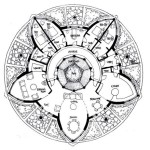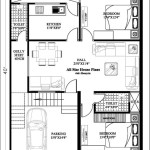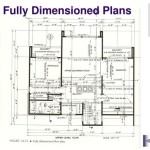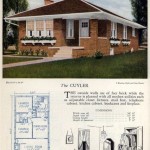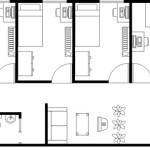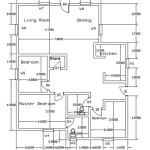```html
Midwest House Plans With Basement: Maximizing Space and Value
Home construction in the Midwestern United States often involves careful consideration of climate, landscape, and budget. One popular architectural feature, particularly in regions with cold winters and stable soil conditions, is the basement. Midwest house plans with basements offer significant advantages, from providing extra living space to enhancing the structural integrity of the home.
A basement can serve a multitude of purposes, adapting to the evolving needs of a family. It can be transformed into a recreation room, home office, guest suite, or simply provide ample storage. The presence of a basement also contributes significantly to the overall resale value of a property. Furthermore, a basement offers protection from severe weather events, a crucial consideration in the Midwest.
Key Point 1: The Practical Advantages of a Basement in Midwest Homes
One of the most compelling reasons for incorporating a basement into a Midwest house plan is the added living space it provides. In many instances, the square footage of the basement nearly doubles the usable area of the home. This is particularly beneficial for growing families or individuals who require dedicated spaces for hobbies, work, or entertainment. A finished basement can substantially increase the comfort and functionality of a home without significantly increasing the footprint of the property.
Beyond living space, basements offer invaluable storage solutions. Seasonal items, sporting equipment, and household goods can be neatly organized and stored away, freeing up space in the main living areas. A well-designed basement storage area can contribute to a more organized and clutter-free home environment.
Moreover, basements offer a safe haven during severe weather. In regions prone to tornadoes and severe thunderstorms, a basement provides a secure shelter for occupants. This peace of mind is a significant advantage for homeowners, especially during storm season. The basement can also be easily equipped with emergency supplies to enhance its protective function.
From a structural perspective, a basement provides a solid foundation for the house. It helps to anchor the structure and protect it from ground movement caused by freezing and thawing cycles. This is particularly important in the Midwest, where the climate can subject the ground to significant stress throughout the year. A well-constructed basement can contribute to the long-term stability and durability of the house.
Key Point 2: Design Considerations for Midwest House Plans with Basements
When designing a Midwest house plan with a basement, several factors must be considered to ensure optimal functionality and comfort. The type of basement, its access points, and its integration with the overall house design are all crucial aspects.
There are three primary types of basements: full basements, partial basements, and walk-out basements. A full basement extends beneath the entire footprint of the house, offering the maximum amount of usable space. A partial basement covers only a portion of the foundation, often used for utilities and storage. A walk-out basement features an exterior door and windows on one side, allowing for easy access to the outdoors and increased natural light. The choice of basement type depends on the homeowner's needs, budget, and the topography of the building site.
Proper waterproofing is essential for preventing moisture problems in a basement. Effective drainage systems, moisture barriers, and proper ventilation are crucial for maintaining a dry and healthy environment. Additionally, the choice of building materials should be resistant to moisture damage. Addressing waterproofing concerns during the construction phase can prevent costly repairs and health issues down the line.
Accessibility is another key design consideration. An interior staircase provides convenient access to the basement from the main living areas. A walk-out basement offers direct access to the outdoors, making it ideal for recreation areas or guest suites. The placement and design of access points should be carefully considered to maximize functionality and safety.
Natural light can significantly enhance the usability and appeal of a basement. Above-ground windows, window wells, and light wells can bring natural light into the space, making it feel more open and inviting. Proper lighting design is essential for creating a comfortable and functional environment.
Key Point 3: Cost Factors and Return on Investment
The cost of building a basement is a significant factor in the overall construction budget. However, the increased living space and enhanced property value can often justify the investment. The cost of a basement depends on several factors, including the type of basement, the size of the house, the soil conditions, and the level of finishing.
Excavation costs can vary depending on the depth of the basement and the type of soil. Removing large rocks or dealing with unstable soil conditions can increase the excavation expenses. Proper soil testing and site preparation are crucial for accurately estimating excavation costs.
The type of foundation materials used will also affect the cost of the basement. Poured concrete walls are generally more expensive than concrete block walls, but they offer superior strength and water resistance. The choice of foundation material should be based on structural requirements and budget considerations.
Finishing a basement can significantly increase its usability and value. The cost of finishing a basement depends on the level of detail and the types of materials used. Adding walls, flooring, lighting, and plumbing can transform a basic basement into a functional living space. However, it's important to balance the cost of finishing with the potential return on investment.
While building a basement involves an upfront investment, it can significantly increase the resale value of a home. The added living space and storage capacity make the property more attractive to potential buyers. A well-designed and finished basement can be a valuable asset when it comes time to sell the house.
Furthermore, consider the long-term cost savings associated with a basement. The energy efficiency of the home can be improved through proper insulation in the basement walls and ceiling. This can reduce heating and cooling costs, particularly during extreme weather conditions. Additionally, the basement can house utilities, protecting them from the elements and reducing the risk of damage.
Ultimately, the decision to include a basement in a Midwest house plan depends on individual needs, budget, and priorities. However, the added living space, storage capacity, protection from severe weather, and potential increase in property value make it a worthwhile investment for many homeowners. Careful planning and attention to detail are essential for creating a functional and comfortable basement that enhances the overall quality of life.
The integration of the basement into the overall architectural style of the house is also important. Whether the design is traditional, modern, or farmhouse, the basement should complement the aesthetics of the main living areas. This can be achieved through thoughtful material selection, lighting design, and the incorporation of architectural details that echo the style of the house.
The environmental impact of building a basement should also be considered. Sustainable building practices, such as using recycled materials and minimizing waste, can help to reduce the environmental footprint of the construction project. Additionally, energy-efficient features, such as high-performance insulation and energy-star appliances, can help to reduce the long-term environmental impact of the home.
By carefully considering all of these factors, homeowners can create a Midwest house plan with a basement that meets their needs, enhances their lifestyle, and adds value to their property. The basement is more than just an underground space; it's an integral part of the home that can provide years of enjoyment and functionality.
```
50 Top Midwest Midwestern House Plans And Floor

50 Top Midwest Midwestern House Plans And Floor

900 Midwestern Homes Living Ideas House Plans Floor Craftsman

House Midwest 2 Plan Green Builder Plans

Hillside House Plan Modern Daylight Home Design With Basement

50 Top Midwest Midwestern House Plans And Floor

Hillside House Plan Modern Daylight Home Design With Basement

House Plans With Basements Blog Dreamhomesource Com

Rustic Craftsman Style Farmhouse Plan 7339 Midwest 2

Midwest House Plans Midwestern Style Home

